Robotics Education Journal
 10/02/2020
10/02/2020 The January-February 2011 issue of Robot magazine published an eye-opening article titled The Robots of China, by Taiwan-based Chinese technology correspondent Humanoido. This feature story about the inner sanctum of full-scale humanoid robotics R&D in a country largely hidden from view in the West was revolutionary journalism for its time. The state of Sino humanoid robotics research, today, is not publicly available, but certainly this repost with enhanced digital photography from the original shoot offers provocative historical insights.
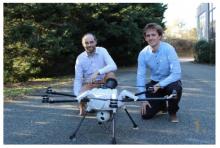 09/29/2020
09/29/2020 Elistair, the tethered drone manufacturer has announced the opening of their first North American office in Boston. This will facilitate the company’s rapid growth in the US and Canadian markets and its ability to provide local support to customers and partners. Created in 2014 in France, Elistair has rapidly positioned itself as the leading manufacturer of tether stations and tethered drones with more than 600 systems deployed in 65 countries. The company’s patented tethered drone systems are capable of flying for extended periods and have been deployed at major events such as the US Democrat party Primaries in 2020, the Superbowl final in 2019, the Champions League final in 2019 and the Ryder Cup and Paris Peace Forum in 2018. Elistair offers multiple products in the tethered drone arena that address event safety and community surveillance needs.
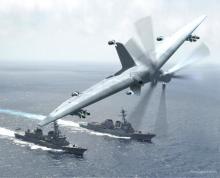 09/28/2020
09/28/2020 The U.S. Navy and Marine Corps both say they need expanded surveillance capabilities for a potential fight with China, but the Marines have cut bait on a big, ship-based system that some analysts say would make a big difference for both services. The Chief of Naval Operations' air warfare lead said earlier this month that every carrier strike group commander needs more surveillance, and he wants to find a way to get more pure intelligence, surveillance and reconnaissance drones flying off the flight decks of Navy ships as soon as possible.
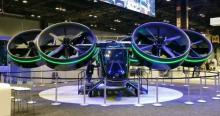 09/24/2020
09/24/2020 The BELL NEXUS full-scale multirotor has received extensive press in recent years, and BELL says the aircraft could be operational as early as the mid-2020s. Given the ubiquitous presence of hobby and commercial multirotor drones, and the extensive use of drones by the military, we have put together a brief refresher on how multirotors fly. Full-scale multirotors and RC versions operate by the same aerodynamic and mechanical principles.
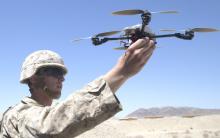 09/23/2020
09/23/2020 The U.S. Marines Corps is moving smaller unmanned aerial vehicles (UAVs) into its ground combat units even as its aviators are further refining the Large UAS Requirement. The U.S. Marine Corps is still charting its path forward for large drones.
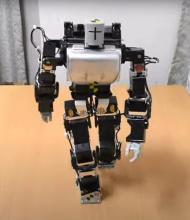 09/18/2020
09/18/2020 A blossoming of small table-top robots in the early 2000s lit up the robotics world for several years. This era has been dramatically recalled by Masahico Yamaguchi’s recent demo of his latest humanoid robot. Yamaguchi, affectionately nicknamed “Dr. Guero” by his many followers, recently demonstrated his latest robot on YouTube and on his Facebook page. In 2011, Robot magazine posted a Buyers Guide of the two dozen+ humanoid robots then available, and Dr. Guero’s latest demonstration shows how far the technology has come. See Dr. Guero’s latest humanoid robot demo and a historical perspective, below.
 09/15/2020
09/15/2020 ACEINNA, one of the world’s leading developers of inertial based guidance and navigation systems for autonomous vehicles and devices, today announced the availability of their new ACEINNA OpenIMU ROS Driver for developers of robots and robotic applications. “This new ROS driver makes it simple to integrate a wide variety of ACEINNA IMUs (Inertial Measurement Unit sensors) into almost any robotics applications (warehouse robotics, autonomous vehicles, last mile deliver robotics, etc.), which uses ROS,” says James Fennelly, Product Marketing Manager – Inertial Systems at ACEINNA. “When combined with our IMU’s industry leading reliability and accuracy, as well as very competitive pricing (under $100), developers of robotic solutions finally have an easily integrated, rock-solid solution for their navigation and localization challenges.”
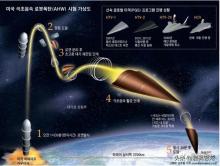 09/13/2020
09/13/2020 A publicly posted Chinese news bulletin ostensibly reports on the Chinese answer to the U.S. Space Plane. Although we cannot verify the information in the document and have not contacted its author(s), the article offers what you may find to be an illuminating perspective on the still largely veiled Chinese space plane program.
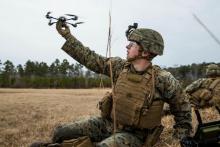 09/08/2020
09/08/2020 The USN reports that Pentagon has given the green light for military units to purchase small drones from five companies following a months-long review aimed at ending the military's reliance on emerging tech made in China. Earlier this month, the Defense Department's Defense Innovation Unit (DIU) approved small unmanned aircraft systems (sUAS) made by Altavian, Parrot, Skydio, Teal, and Vantage Robotics for use in the field. The drones fall under DIU's "Blue sUAS" program.
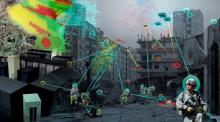 09/05/2020
09/05/2020 David Place notes in the 23 August #20 edition of the Unmanned Systems News: “The era of artificial intelligence (AI) and machine learning for Army tasks in the field has arrived. The AI of today looks nothing like the worrisome science fiction representation. Rather, AI is performing many tedious and manual tasks and providing value from recognition and conversation systems to predictive analytics pattern matching and autonomous systems.” Deployment of elements of AI and machine learning illuminate how AI is making a growing contribution to Army operations.
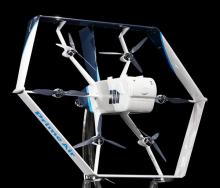 09/03/2020
09/03/2020 The Federal Aviation Administration has issued a certificate to Amazon approving its fleet of Prime Air drones to make deliveries. Packages may arrive at customers’ doorsteps in the not too distant future.
 08/27/2020
08/27/2020 Designed for mobile platform traction systems, ElectroCraft's MPW52 wheel drive integrates a 14-pole Brushless DC motor with a heavy-duty, single-stage planetary gearbox mounted inside the hub of an aluminum wheel with polyurethane tread. Optional encoder feedback supports positioning capability and an electromagnetic brake can hold position when power is removed. The MPW52 combines efficient performance with long life.
 08/22/2020
08/22/2020 An expert human fighter pilot was soundly defeated by an AI agent in the “AlphaDogfight Trials”, a DARPA-sponsored combat simulation. AlphaDogfight is a precursor to the DARPA Air Combat Evolution (ACE) program, which will include AI simulation and full-scale aircraft testing. ACE will eventually implement AI-based autonomy across a range of air combat missions.
The US military’s AlphaDogfight finals were held August 18 – 20. Heron Systems prevailed, five rounds to zero, with its fighter jet AI by defeating a human fighter pilot sitting in a full-house combat flight simulator wearing VR goggles. This points to the growing role of machine intelligence and AI in aerial combat. Ben Bell, senior machine learning engineer at Heron Systems, told Defense One that the winning team’s AI had been through more than 4 billion simulations, or about 12 years of flight time.
 08/20/2020
08/20/2020 The DARPA AlphaDogfight Trials aim to demonstrate the feasibility of developing effective, intelligent autonomous agents capable of defeating adversary aircraft in a dogfight. DARPA’s AlphaDogfight Trials seeks to advance the state of artificial intelligence (AI) technologies applied to air combat operations. The trials are a computer-based competition designed to demonstrate advanced AI algorithms that can perform simulated within-visual-range air combat maneuvering, otherwise known as a dogfight. The goal is to use the dogfight as the challenge problem to increase performance and trust in AI algorithms and bring together the AI research and operator communities.
In August 2019, DARPA selected eight technically and organizationally diverse teams to compete in the AlphaDogfight Trials with the purpose to energize and expand a base of researchers and developers applying AI technologies to complex operational problems. The first of three AlphaDogfight Trials competition events was held at JHU/APL in November 2019. Trial #1 was an exhibition match with the opportunity for teams to compete against different APL developed adversary agents and test the simulation environment at scale.
Trial #2 held in January 2020, was the first competition where teams were ranked against each other and tested their agents against more challenging adversary agents.
Trial #3 is the final competition. Teams will compete against each other in a bracket style competition with the top team advancing to fight against a USAF fighter pilot in a simulated dogfight.
AlphaDogfight Trials is a precursor to the DARPA Air Combat Evolution (ACE) program, which involves AI development and demonstration in three program phases – modeling and simulation, sub-scale aircraft, and full-scale aircraft testing. Ultimately, ACE will be flying AI algorithms on live aircraft to demonstrate trusted, scalable, human-level autonomy for air combat.
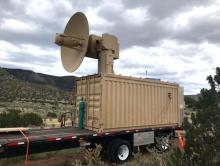 08/17/2020
08/17/2020 The Air Force will send its Tactical High Power Microwave Operational Responder (THOR) overseas this fall for operational field experiments, with Army warfighters in particular keen to get their hands on drone-killing systems. In fact, the Army has so much confidence in the Air Force’s microwave experiments that it’s decided to focus its own R&D dollars on lasers and let the Air Force take the lead developing microwave weapons that might be used by both services.
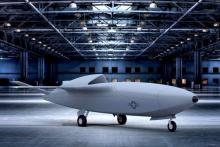 08/13/2020
08/13/2020 The four winners announced July 23rd in the Air Force’s highly-anticipated contest for the Skyborg demonstration program — Boeing Co., General Atomics Aeronautical Systems Inc., Kratos Unmanned Aerial Systems Inc., and Northrop Grumman Systems Corp — are all big names in autonomous systems. The drone is part of the Air Force's Low-Cost Attritable Strike Demonstration program. "The intent of Skyborg is to integrate an autonomy mission system core and suite of services ... with multiple low-cost air vehicle systems, each designed to perform one or more mission types." The companies will be competing for an indefinite-delivery, indefinite-quantity contract, estimated to be worth up to $400 million.
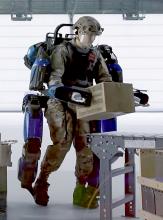 08/05/2020
08/05/2020 The Guardian XO industrial exoskeleton augments operator strength without restricting freedom of movement. It is designed to boost productivity while dramatically reducing injuries. Industries it is suited for include Industrial Manufacturing, Oil & Gas, Maritime, Construction, Automotive, Military & Defense, Distribution & Warehouse logistics, and Aviation & Aerospace. SARCOS was recently awarded a contract by the U.S. Marine Corps Logistics Innovation Office program for the delivery of an Alpha version of the Guardian® XO® full-body, powered industrial exoskeleton robot. Delivery of the Guardian XO Alpha unit to the U.S. Marines is scheduled by the end of 2020.
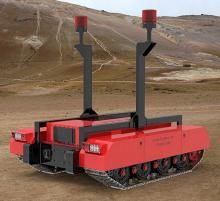 08/03/2020
08/03/2020 Corporate Vision (CV) magazine’s prestigious Technology Innovator 2020 program recently presented c-Link Systems with the “Most Innovative Autonomous Robotics Company 2020” award for “demonstrated excellence, commitment, and innovation.” The innovation award honors c-Link's history of unmanned ground vehicle innovation, most recently represented by the new compact Omni Panzer UGV line.
The first annual Automated Vehicles Symposium took place July 27-30. It was a robust, full-featured online conference with many sessions and lectures to choose from, as well as online opportunities to network with speakers and fellow attendees. Opening day segments dealt with policy and planning, operations & applications, users & human factors, and technology topics. Virtual video platform access used Vimeo, and Zoom was used for discussion groups in breakout sessions. Event sections included: Keynotes & Plenaries; Breakout Sessions; Poster Sessions; Enterprise Solution Series; Exhibitors + Sponsors; and Networking. The virtual platform hosting the event is available on-demand to attendees for 90 days following the symposium.
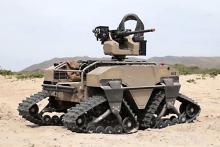 07/30/2020
07/30/2020 The Chinese Army is preparing to deploy small tracked unmanned ground vehicles (UGVs) armed with machine guns, night-vision, missile loaders, and cameras to launch attacks while leaving manned systems at relatively safe stand-off distances. U.S. policy requires a human in the loop before a robot can use deadly force, yet we have little or no assurance that potential enemies will follow a similar path.
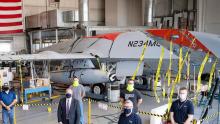 07/28/2020
07/28/2020 An update at TheDrive.com shows the first public view of Boeing’s MQ-25 Tanker Drone refueling pod on a carrier-based MQ-25 tanker drone test vehicle. The Cobham buddy refueling store is mounted under the drone's left wing. The drone is designed to fly extended maritime surveillance missions. The photo was taken at Boeing’s facilities at MidAmerica last week during a visit by Illinois Democrat Senator Tammy Duckworth. The airport is adjacent to Scott Air Force Base in Illinois.
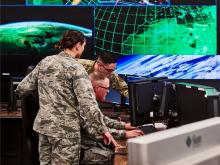 07/23/2020
07/23/2020 W.J. Hennigan with supporting reporting by Julia Zorthian, today, posted on Time.com a comprehensive update on Russian, Chinese and U.S. space weaponry and testing. This is a highly readable compilation of what is known in the public domain, today.
 07/21/2020
07/21/2020 The Slocum G2 Glider “Silbo”, built by Teledyne Webb Research, recently achieved a first for an autonomous underwater vehicle (AUV) by completing a 4+ year journey that circumnavigated the Atlantic Ocean in four legs. As reported by Teledyne Marine, “Launched in the early spring of 2016 from Cape Cod, Massachusetts, Silbo interacted with international science teams from several countries, collected scientific and critical engineering data along the way for a variety of programs, and returned to Cape Cod in late June of 2020.”
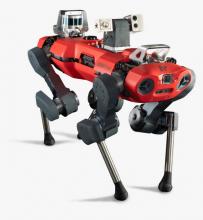 07/20/2020
07/20/2020 The latest generation of semi-autonomous robotic canines are already at work patrolling and surveilling construction, entertainment and other venues. ANYbotics’ ANYmal C is a recent entrant providing “mobility, autonomy and inspection intelligence” to various inspection operations. It follows in the paw prints of Boston Dynamics’ Spot, and Unitree Robotics’ Aliengo.
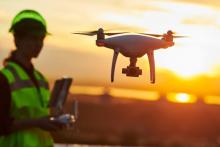 07/18/2020
07/18/2020 Researchers at the Ben-Gurion University of the Negev in Israel have developed a system that locates the operators of a drone by analyzing how the vehicle moves through the air. The new AI-augmented approach, tested only in simulators at the date of its announcement, interprets the reactions of drone pilots to environmental factors such as obstructions and sun glare.
